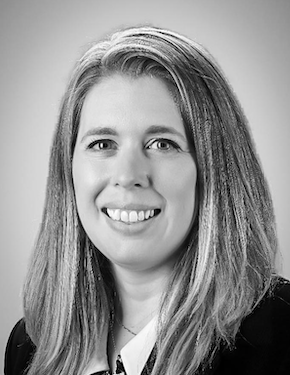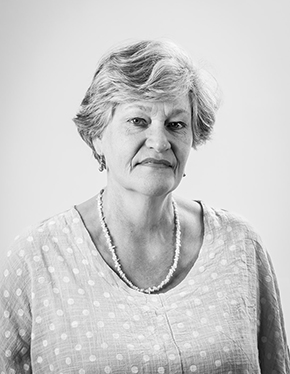HOME 
What Makes a Book Valuable?
10 Things to Look Out For
There are multiple factors that can make a book valuable. If the book was written by a famous or at least still well-regarded author, or illustrated by a popular illustrator, this obviously could be a boon! Condition will inevitably impact on the potential value of a book, though the significance of this can vary to some degree depending on the nature of the book. Modern first editions and private press books particularly spring to mind as sensitive in this regard. Rare book buyers can be a little more tolerant when it comes to early printing or children's books, for example.
Most people today, with or without an interest in what can make a book valuable, are aware of the difference a book's edition can have. This is especially true in regard to novels, plays and poems, where the first edition is almost always the preferred edition for collectors. In this list of "10 things to look out for that make a book valuable", we look at some of the other, slightly more obscure or esoteric aspects that can make a book valuable.
Forum Auctions' Guide to Identifying Rare & Valuable Books
Contact us
Ten Things That Make a BookValuableRareCollectableat Forum Auctions
-
Small or reduced print-runs
Beyond the headline-grabbing modern first editions and children's books, there are many other examples of works that are also very scarce but not so well known. This scarcity can be due to the book in question being the author's first work and, without any way of gauging popularity in advance, the printer or publisher hedging their bets with a small print run. Several famous books saw a large percentage of their first print-run wiped out by warehouse fires and other catastrophes. Others were destroyed due to threat or fear of litigation, dispute and sometimes simply just because the author had decided he or she did not after all want to see the work enjoy public circulation. As a result surviving copies are decidedly rare. Legendary rarities from across this spectrum include:- Herman Melville, Moby-Dick, the first American edition of 1851 initially sold poorly and copies remained in the publisher's warehouse for some time, where all but 60 copies were eventually destroyed in a fire...
- Lewis Carroll, Alice in Wonderland, the first, suppressed edition of 1865, withdrawn at the author's request because the illustrator John Tenniel was dissatisfied with the illustrations' reproduction. Only 23 copies are known to still exist now.
- James Joyce, The Dubliners; a rare edition of 1910 that was finally burnt or pulped (opinions vary) due to various problems that beset the edition.
- J.K. Rowling, Harry Potter and the Philosopher's Stone, the first edition, first impression of Rowling's first published book, of which 5,650 copies were initially printed, but of which only 500 were issued in the now highly desirable hardback format, many of which were destined for the public library system.
-
Limited editions
One of the wonderful things about Private Press books and other limited editions is that they normally specify the number of copies that are actually printed, as part of the limitation details. This can be very useful in establishing the likely relative scarcity of the book in question. Limitations can vary considerably, and generally limited editions of more than 500 copies are not considered to be especially uncommon by collectors of such books. Editions limited to less than 100 copies on the other hand are considered relatively scarce, and below 50 rare. This does not always mean there is automatically a strong market for such books, as other factors still come in to play, such as the attractiveness of the book and popularity of the author, illustrator, press or subject. Some private presses produced works in two or more stages of limitation, with smaller limitations being, for example, specially bound, printed on vellum and/or containing additional illustrations, sometimes as a loose 'suite' of plates. It is always worth checking the limitation page to see which issue the books you own, or are interested in buying, fall within. -
Collation & Completeness
One of the most important things that helps make a book valuable is, unsurprisingly perhaps, how complete it is. For modern books you would really hope for everything to be present and correct, though an interesting exception to this might by the true first edition of T.E. Lawrence's Seven Pillars of Wisdom which was produced intentionally with varying contents. However, with older books, and especially printed books from the 15th century, completeness can be considerably more challenging. Even incomplete incunables are highly sought after and rare. Antiquarian books should always be collated and checked, as it is not unusual for pages or plates to be missing, or sometimes replaced with leaves and plates from other copies or editions. In regard to plates and illustrations, some books kindly provide a separate index or table listing these, but many do not. There are various resources online that can be used to check, and also specialist bibliographies available in print, but often you will need to have the books collated by a specialist. -
Provenance & Association
Provenance (a book's explicit chain of previous ownership) is extremely important, and sometimes underappreciated. With important and valuable antiquarian books, provenance, where available, can provide a record of the book's ownership, sometimes going back to the time of the book's publication, for example if the book was originally a subscriber's copy. This helps authenticate the book, particularly in regard to extremely valuable rare books, such as Shakespeare's Folio editions. Provenance also sometimes helps identify books that were once part of a library or other institution, which allows for checking to see if the book was ever officially deaccessioned. Ablated or otherwise removed library markings can be a sign of suspicious behaviour at some point in a book's past, though by no means automatically prove that, and can still help experts track down the institution in question. 'Association' is an aspect of provenance that adds interest to rare book collectors, normally suggesting that one of the previous owners of the book in question was someone of importance, in their own right or potentially in the context of said book. Literary associations, for example, can elevate a first edition's value significantly, and can be identified by factors such as bookplates, signatures, inscriptions and even additional annotations, including marginalia. Our rare books specialists have many years experience between them identifying and authenticating such additions, and would be glad to advise further. -
Signed & Inscribed
Rather an obvious example of a thing that might make a book valuable this one! But worth reiterating nevertheless. Anything signed or inscribed by the author, illustrator or other significant contributor to that book's direct production is definitely a boon, all jokes about "author's rare, unsigned copy" aside. The value such autograph or holograph additions make varies wildly, depending on factors such as the relative scarcity of the signature (J.D. Salinger's signature is much rarer than, say, Philip Pullman's for example), the popularity of the person or book in question, and the edition and condition thereof of that book. Some modern first edition collectors prefer books that have been flat-signed rather than including a basic dedication naming the recipient. Larger inscriptions, especially if relating to an aspect of the book inscribed and/or to someone of perceived importance in their own right, can drastically increase the value of the book to collectors. Again, Forum Auctions' specialists are perfectly placed to advise you on the value and authenticity of any signed and inscribed books you have. -
Issue Points
The bane of many book collectors and cataloguers, especially in relation to literature of both antiquity and the more modern era. The term "issue point" refers to a particular feature or characteristic that helps differentiate one "issue" of a book from another. In the printing and publishing process, sometimes small changes are made during the course of a book's print run. These can include corrections of typographical errors, alterations to the text, changes in advertisements, adjustments in binding (often referred to as "state") and, highly significantly, variations in the dust-jacket. Each of these changes forms an "issue point" that can be used to identify a particular issue of the book as preeminent. Collectors normally seek out the first issue, of course, though in a few cases this is nigh-on-impossible. Searching online will help you identify some issue points, particularly for the more famous books from the 20th century, such as The Great Gatsby and Harry Potter and the Philosopher's Stone, but often you will need to seek out guidance from a rare books specialist. -
Famous Binders
The study of antiquarian fine bindings and the identification of the artisans or studios responsible used to be one of the more scholarly aspects of the rare books world, championed by certain rare books dealers and institutions. Today there has been a resurgence of interest in this area, as with other aspects of traditional book production, so it is definitely worth checking any antiquarian books you have to see if they were bound or rebound by binders of note. Famous bookbinders include Samuel Mearne, Roger Payne, the Derome family, Francis Bedford, Guild of Women Binders, Douglas Cockerell, Katharine Adams, Sangorski & Sutcliffe, Zaehnsdorf and Birdsall. Many of these book binders signed their bindings, often in gilt to a turn-in onto an inner cover or printed in small letters to an edge of front or rear fly-leaf. Sometimes the name or monogram could be integrated more elaborately into the binding's decoration. -
Colouring
It is unlikely most owners of antiquarian books would ever be blasé about any colour illustrations that grace their volumes, but the history of colouring for book illustration is itself quite rich and complex. There are various terms relating to colouring in the context of rare books, ranging from hand-colouring to chromolithography. Hand-colouring is the earliest form of colouring to enhance or illuminate illustrations, and the preference nearly always is for original or old colouring, i.e. that undertaken closest to the time of the book's actual production. Later colouring if done to a high standard can still impact positively on a book's value, for example with steel-engraved topographical books of the 19th century. Unfortunately an enthusiastic child's juvenile scribblings or colouring-in will not normally elevate a book's value, unless perhaps the child was a young Picasso... The mechanised application of colour introduced various techniques, and it is sometimes assumed that because the colouring has been printed or otherwise mechanically applied the book's value cannot be high. However, there are several important works that mark either key stages in the emergence of a new process or are renowned high-points of that process's application which make them highly collectable, such as Oliver Byrne's edition of the Elements of Euclid, and some of the greatest illustrated books for children (and adults) ever produced. -
Extra-Illustrated
Extra-illustration is the process off adding pictures and other media from various sources to a book, often (but not always) to add content relevant to the subject of the book for purposes of reference, edification or simply amusement. Extra-illustrating in this context is also called "grangerisation", after the 18th century English clergyman James Granger. Despite the occasional purist's cry of "biblioclasm!", a charge made on the accounts of interfering with the book now extra-illustrated and the potential breaking up other books to obtain illustrative materials, this process when applied well and with strategic intelligence and/or wit, can enhance the book's value, especially if the book was a worthy but somewhat dull one to begin with... -
Fore-Edge Paintings
A true hidden gem in the rare books world, fore-edge paintings have a dedicated and passionate network of collectors, and are responsible for some of the most charming special collections held by important libraries around the world. The art-form as we know it today, that of a painting applied to the fanned fore-edges of a printed book's text-block which then disappears when closed, dates back to at least the 17th century, but the process became especially popular in the 18th century. Subjects range considerably, often reflecting the topic or perceived nature of the underlying book, including scenes from the book, landscapes, sports & pastimes, allegorical, religious & erotic images, and more abstract, decorative patterns.
author's first book
limited edition
bibliography
inscribed association copy
issue points
fine bindings

original colouring

extra-illustrated
fore-edge painting
Exploring Rare Books at Forum Auctions
Hopefully this guide will be of some assistance toward understanding what makes a book valuable, both for those wanting to know more about the books they already own and those looking to start collecting rare books. There are other things to look out for too, of course. Fine jewelled bindings will indubitably be valuable, though the value would depend somewhat on the jewels in question! In the good old days it was also not unheard of for people to hide banknotes between the pages of books, and many a bookseller has been pleasantly surprised to stumble upon cash prizes when handling old books. So always worth checking if you are helping a relative or friend with their old books collection.
Our rare books specialists are always on hand to help you with any enquiries you may have, so do please contact us for more information on understanding what makes a book valuable, and beyond.
Experts



.jpeg)

.jpeg)
.jpeg)
.jpeg)




.jpeg)



.jpeg)
.jpeg)


.jpeg)


